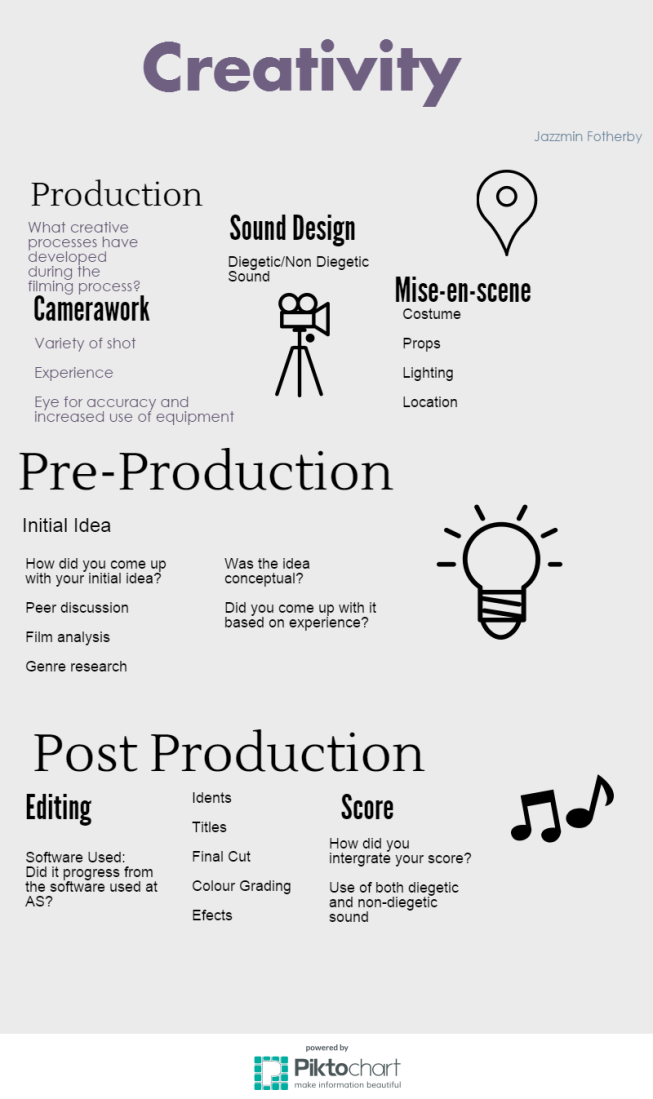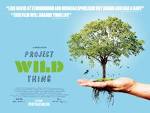Pre Production
- How did I come up with my Idea at AS and A2? – AS: Watched films of a similar genre and used class feedback to come fine tune the idea that we had. A2: Used inspiration from my own life, combined with inspiration for shots from other films.
Production
- Camerawork. AS: Limited shot use, lack of knowledge on how to use equipment such as steadicam. A2: Wide range of shots used, experience gained wit using the equipment and knowing what looks good and what doesn’t.
- Sound. AS: Just looked on website to see what sounded good with the film. A2: Researched music of my genre, then selected music carefully that would match the cut timings of my shots.
- Mise-en-scene. AS: Lighting – first time trying to film in dark areas, didn’t use appropriate lighting. Props – Didn’t use props. Location – Just used my own house for ease of access. Costume – was planned but not fine-tuned. A2: Lighting – to appropriately light dark areas. Props – Shovel. Location: Based the location on size, appropriateness and narrative. Costume – several different costumes based on genre
Post Production
- Editing. AS: Software used – Final Cut Pro X, pixelmator, didn’t colour grade, did I use effects effectively? A2: Using all the same software but at a higher level because of experience, now colour grading and using titles more appropriately.
- Score. AS: Picked music that loosley matched the theme of what I was going for. A2: Used a variety of music to complement mood and genre as well as matching the timings of cuts.





